 | ||
Contribution of nayanars and alvars towards bhakti movement
The alvars, also spelt as alwars or azhwars (āḻvārkaḷ [aːɻʋaːr], ‘those immersed in god’) were Tamil poet-saints of South India who espoused bhakti (devotion) to the Hindu Supreme god Vishnu or his avatar Krishna in their songs of longing, ecstasy and service. They are venerated especially in Vaishnavism, which regards Vishnu or Krishna as the Supreme Being.
Contents
- Contribution of nayanars and alvars towards bhakti movement
- History of alvars vishnu chittulu
- Etymology
- Legacy
- Summary
- References
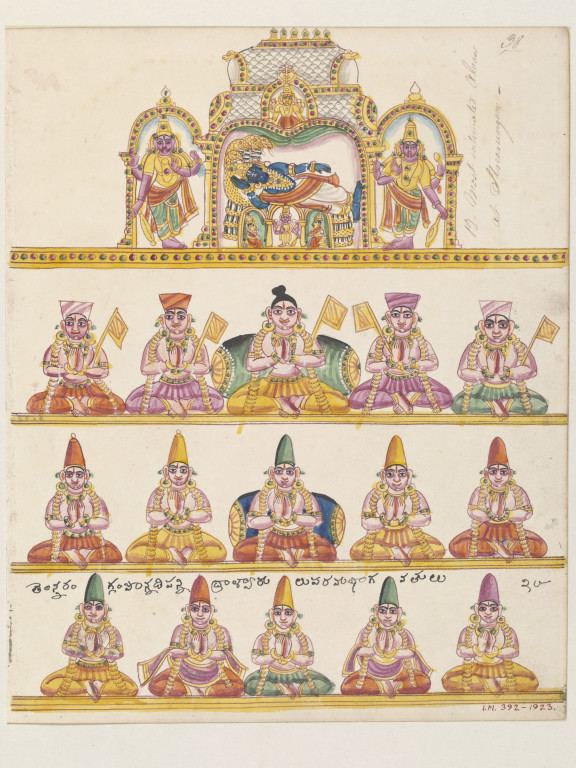
Many modern academics place the Alvars date between 5th century to 10th century CE, however traditionally the Alvars are considered to have lived between 4200 BCE - 2700 BCE. Orthodoxy posits the number of alvars as ten, though there are other references that include Andal and Madhurakavi Alvar, making the number twelve. Andal is the only female saint-poet in the 12 Alvars. Together with the contemporary sixty three Shaiva Nayanars, they are among the most important saints from Tamil Nadu.

The devotional outpourings of Alvars, composed during the early medieval period of Tamil history, helped revive the Bhakti movement, through their hymns of worship to Vishnu and his avatars. They praised the Divya Desams, 108 "abodes" (temples) of these Vaishnava deities. The poetry of the Alvars echoes bhakti to God through love, and in the ecstasy of such devotions they sang hundreds of songs which embodied both depth of feeling and felicity of expressions. The collection of their hymns is known as Divya Prabandha. The Bhakti literature that sprang from Alvars has contributed to the establishment and sustenance of a culture that broke away from the ritual-oriented Vedic religion and rooted itself in devotion as the only path for salvation. In addition they helped to make the Tamil religious life independent of a knowledge of Sanskrit. As part of the legacy of the Alvars, five Vaishnava philosophical traditions (sampradayas) have developed at the later stages.
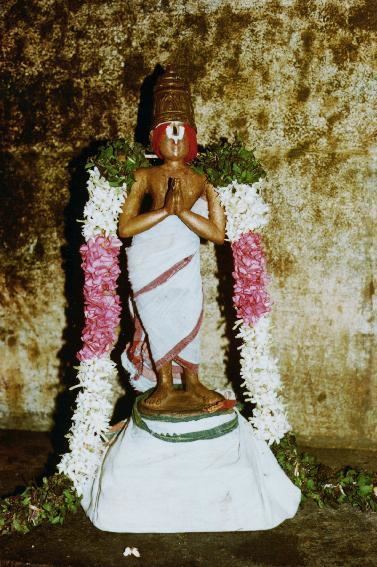
History of alvars vishnu chittulu
Etymology
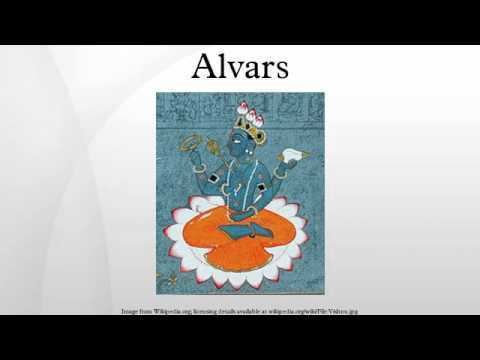
The word azhwar has traditionally been etymologized as from Tamil. 'Azh' (ஆழ்), 'to immerse oneself' as 'one who dives deep into the ocean of the countless attributes of god' However recently Indologist S.Palaniappan has shown that what was originally Āļvār (ஆள்வார்) meaning 'One who rules', or '(Spiritual) Master' got changed through hypercorrection and folk etymology to Āzhvār (ஆழ்வார்) meaning 'One who is immersed' Palaniappan cites inscriptional evidence and even literary evidence from Vaisnhavaite tradition itself for a gradual sound change from āļvār to āzhvār over a period of two centuries from the 9th to the 11th century involving references to religious leaders in Vaishnavism, Shaivism and even Jainism and to political personalities. He states: "āzhvār is but a corrupt form of āļvār which has been used interchangeably with nāyanār in secular and religious contexts in the Tamil land" and "... Notwithstanding the Vaishnava claim of unbroken teacher-student tradition, the fact that Nathamuni has used the form āļvār but Piļļān [A disciple and younger cousin of Rāmānuja] ended up using the form āzhvār suggests that there has been an error in transmission somewhere along the teacher-student chain between the two teachers. This error was obviously due to the influence of the sound variation that has occurred in the Srirangam area and elsewhere". The original word ஆள்வார் compares with the epithet 'Āṇḍãḷ' ((ஆண்டாள்) for the female canonized Vaishnava saint Kōtai ((கோதை) and they share the same verb Tamil. āḷ ((ஆள்), the former being the honorific non-past (or present-future) form and the latter the feminine past form of that same verb.
Legacy
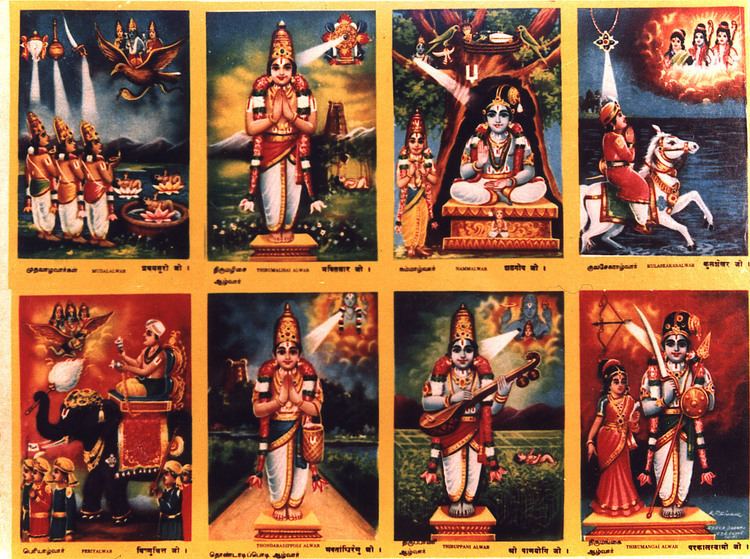
Alvars are considered the twelve supreme devotees of Vishnu, who were instrumental in popularising Vaishnavism in the Tamil-speaking regions. The alvars were influential in promoting the Bhagavata cult and the two Hindu epics, namely, Ramayana and Mahabaratha. The religious works of these saints in Tamil, songs of love and devotion, are compiled as Nalayira Divya Prabandham containing 4000 verses and the 108 temples revered in their songs are classified as Divya desam. The verses of the various azhwars were compiled by Nathamuni (824 - 924 AD), a 10th-century Vaishnavite theologian, who called it the "Dravida Veda or Tamil Veda". The songs of Prabandam are regularly sung in all the Vishnu temples of South India daily and also during festivals.
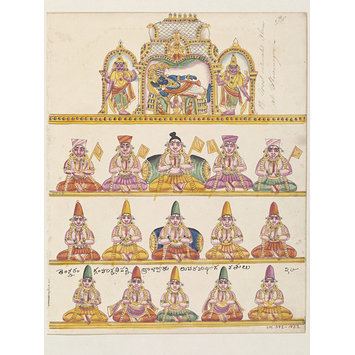
The saints had different origins and belonged to different castes. As per tradition, the first three alvars, Poigai, Bhutha and Pey were born miraculously. Tirumizhisai was the son of a sage; Thondaradi, Mathurakavi, Peria and Andal were from brahmin caste; Kulasekhara was a Kshatria, Namm was from a cultivator family, Tirupana from Tamil Panar community and Tirumangai from kazhwar community. Divya Suri Saritra by Garuda-Vahana Pandita (11th century), Guruparamparaprabavam by Pinbaragiya Perumal Jiyar, Periya tiru mudi adaivu by Anbillai Kandadiappan, Yatindra Pranava Prabavam by Pillai Lokacharya, commentaries on Divya Prabandam, Guru Parampara (lineage of Gurus) texts, temple records and inscriptions give a detailed account of the alavars and their works. According to these texts, the saints were considered incarnations of some form of Vishnu.
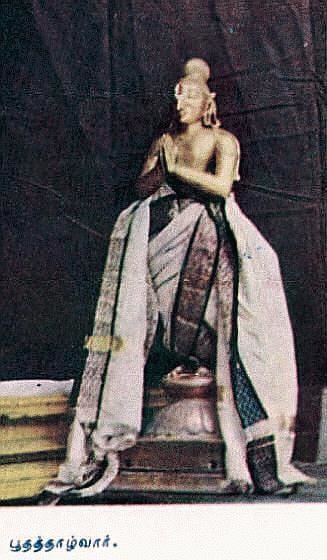
According to traditional account by Manavala Mamunigal, the first three azhwars namely Poigai, Bhoothath and Pey belong to Dwapara Yuga (before 4200 BC). It is widely accepted by tradition and historians that the trio are the earliest among the twelve azhwars. Along with the three Saiva nayanmars, they influenced the ruling Pallava kings, creating a Bhakti movement that resulted in changing the religious geography from Buddhism and Jainism to these two sects of Hinduism in the region.
Summary
Some modern scholars suggest that they lived during 5th - 9th century CE, "on the basis of a few historical evidences", although no "clear" evidence exists. The Encyclopædia Britannica says that Alvars lived between 7th-10th century CE. Professor of Religion and Asian Studies, James G. Lochtefeld of Carthage College, notes in his The Illustrated Encyclopedia of Hinduism, the first three Alvars Poigai, Bhoothath and Pey belonged to the 7th century; while Nammalvar and Madhurakavi belonged to the 10th century; while rest of them lived in the 9th century.
Traditionally the Alvars are considered to have lived between 4200 BCE - 2700 BCE. Traditional dates take them to the age of Shuka from the period of the Bhagavata Purana, many are from Dwaparayuga, while Nammalwar belongs to the early part of Kaliyuga.
The following table shows the place, century and star of birth of each Alvar. Scholarly dating is based on summary of views of modern scholars by Dr. N Subba Reddiar.
